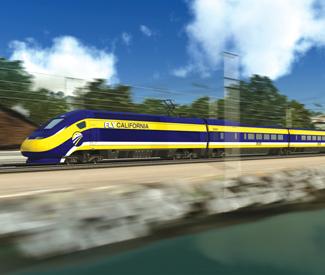Mayor Ed Lee and other regional political and transportation officials are celebrating this week’s agreement to take bond money approved by state voters for the California High-Speed Rail Project and apply it to electrifying the Caltrain’s tracks up the peninsula, which has long been a goal for that troubled transit agency. Electrification will lower operating costs, reduce noise, and be better for the environment.
“Electrifying Caltrain as an early investment and extending Caltrain into the heart of downtown San Francisco at the new Transbay Transit Center are essential for the success of high speed rail and the future economic growth of our region,” Lee said in a prepared statement released yesterday.
Yet his office didn’t respond to questions about how the new agreement – which will apply $700 million in high-speed rail bond money from Prop. 1A to the $1.5 million electrification project, arguing it lays the foundation for high-speed trains to come later – will help the Transbay Terminal. That project needs to come up with the more than $2 billion for the 1.2-mile tunnel from the current Caltrain station at 4th and King streets to bring the trains downtown. The mayor’s press release argued only that it would “provide the momentum upon which to build the Downtown Extension to the Transbay Transit Center.”
Transbay Terminal Joint Powers Authority spokesperson Adam Alberti called the latest agreement “a big deal for transportation” and told us, “The MOU agrees that the early investment of Prop 1A funds should be placed on the electrification of Caltrain.” Even though it doesn’t give money directly to Transbay Terminal, Alberti said it advances a project in which that station is the designated terminus and it frees up future transportation funding for the needed tunnel.
But Quentin Kopp, who launched the high-speed rail project as a state legislator in the ’90s and until recently served on the project’s board, said this latest agreement doesn’t help Transbay Terminal (which he has derided as little more than a real-estate deal) and it represents a violation of Prop. 1A and other high-speed rail provisions.
“Here’s a pot of money and everybody wants to steal from it,” said Kopp, who has criticized recent changes in the high-speed rail plan, such as San Francisco-bound passengers having to transfer to Caltrain in San Jose rather than coming directly into San Francisco and how Caltrain’s tracks limit how many trains can run per hour, hurting the overall project’s financials. “It’s hardly the project that was envisioned.”
As we reported in January, the high-speed rail project has been working to overcome doubts and attacks by fiscally conservative politicians here, in Sacramento, and in Washington DC. And this latest agreement helps overcomes Caltrain’s deep fiscal problems and the opposition of many peninsula politicians and neighborhood groups to creating a larger and more robust high-speed rail line up the peninsula.
5 PM UPDATE: Lee Press Secretary Christine Falvey just responded to my inquiry and said, “The region is pursuing funding the $1.5 billion Downtown Extension through a combination of additional sources, including New Starts, and we expect to announce additional good news on this front soon.” It’s unclear why there is a discrepancy between Alberti’s figures and Falvey’s. Lee has pledged to make a priority of ensuring the train extension to Transbay Terminal gets built.

